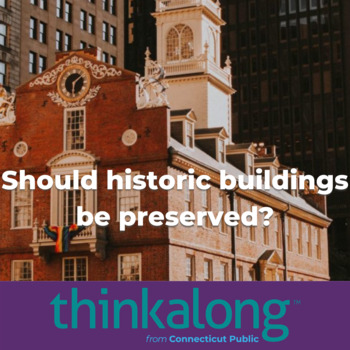Should historic buildings be preserved? - Civil Discourse for Classes
- PDF
- Internet Activities
Description
Thinkalong.org is a free, evidence-based interactive tool for students to develop media literacy skills by applying the 5 Key Questions of Media Literacy to public media content. Importantly, the tool does not require registration for teachers or students, abides by student privacy laws, and is advised by a board of both youth and educators.
Each module consists of:
- a compelling and timely question;
- related current and age-appropriate public media content including audio, video, and text;
- extension resources for advanced or highly-interested students;
- student graphic organizers;
- a simple debate tool;
- a teacher's guide to the module;
- and a guide to the 5 Key Questions of Media Literacy.
This Teacher's Guide supports the Should historic buildings be preserved? module on thinkalong.org. Here is the full module and below is a summary.
Like any material object, buildings decay over time. While some buildings are chosen for preservation, perhaps for their historical or cultural significance, most are eventually torn down to make room for new constructions. But how are these decisions made, and who makes them? If a building is chosen for preservation, what will the preserved building look like? Should conservationists attempt to halt its decay and keep it as is, or should it be restored to its original design? Should we preserve historic buildings?
To use this module with learners in any setting, we recommend using one of the structured discussion formats outlined at thinkalong.org/structuring-discussions. You can find options for a small or large group, so that all students or just a few participate, and examples of some discussion formats.


